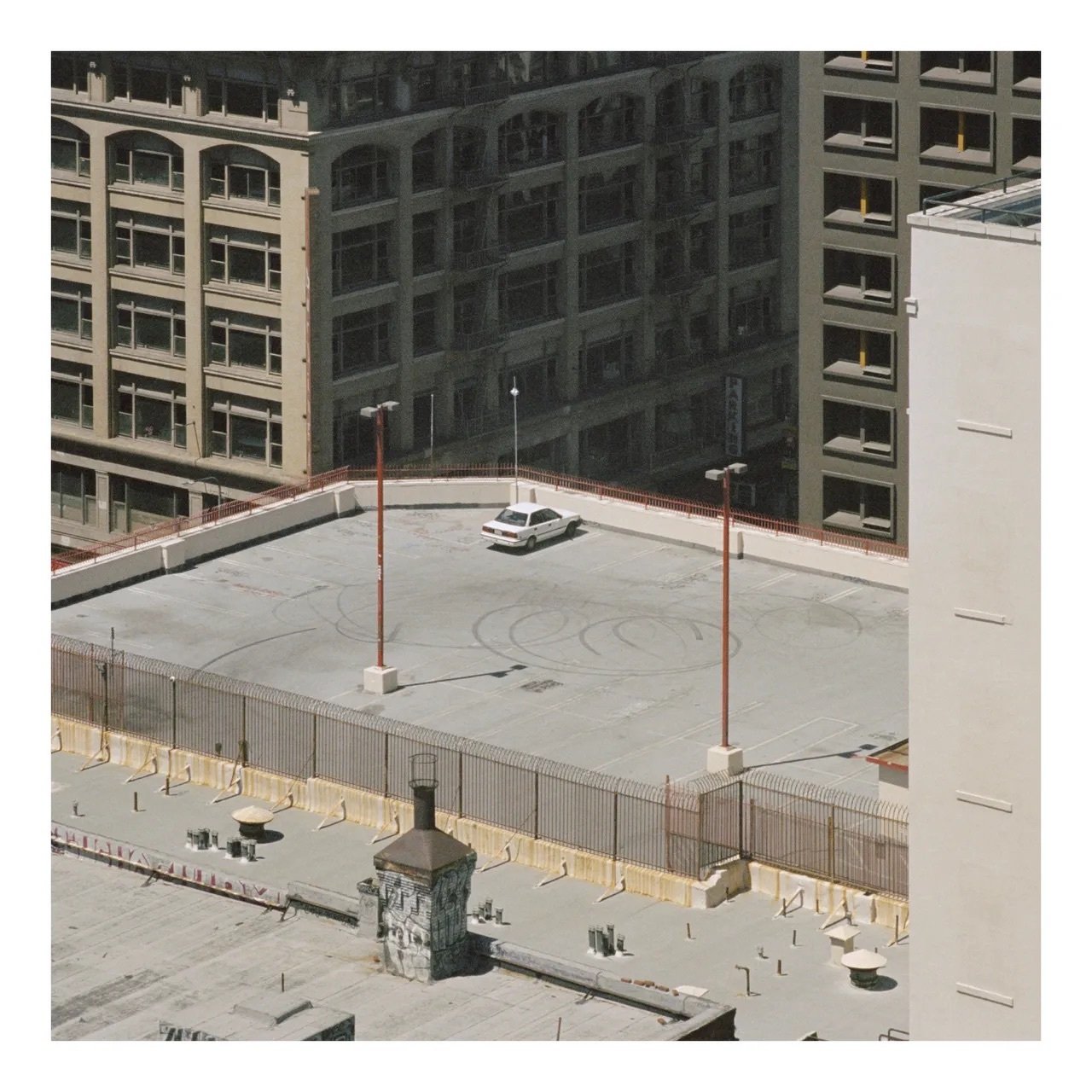Arctic Monkeys - The car
By Anisha Jaya Minocha and Chiara Beaton
The Car, the 7th release from Sheffield-based Arctic Monkeys, sparked speculation whilst reaffirming musical direction. Following on from the slow, nostalgic lounge sounds of their previous album, Tranquillity Base Hotel & Casino (TBHC), it’s safe to say that the band have turned away from the commercial success of 2013’s AM, as well as the rocking, hair flicking Alex Turner that we all know and love. The Car hints at the band’s past, whilst leading listeners onto a new, winding journey. Its minimalist album cover - a plain white Toyota Corolla with burnt rubber circles - tells us that we’ve moved away from intergalactic space hotels to four-wheeled vehicles on the road. Touch down and buckle up: we’ve reached earth.
Opening track ‘There’d Better Be a Mirrorball’ kicks off echoing a sorrowful, dramatic musical score, with a string ensemble embellishing Matt Helders and Nick O’Malley’s rhythm. Turner finally implores listeners to “don’t get emotional” after almost a minute of reminiscent, minor key piano staccato mirroring O’Malley’s bass rhythm. Perhaps addressing cautiously eager fans who fear a continued shift away from the sounds of Arctic Monkeys’ first five albums, Turner keeps his cool and supports the transition into The Car, almost as an attempt to satisfy listeners’ “insatiable appetite”. The music video feeds viewers drips and closeups of different scenes, from the band members’ faces to a movie tape reel. It flicks between “70s aesthetics” and a whimsical black and white journey down country roads, never quite reaching a destination. The vocals slide seamlessly between notes, with Turner’s falsetto conveying desperation for his subject to be understanding about his point of view. There isn’t a prominent trace of apologetic feelings for departing from the adolescent Arctic Monkeys musicality, but rather a progression and embracing of the journey towards new sounds and maturation.
This uncertain journey reappears in the second track, ‘I Ain’t Quite Where I Think I Am’. Psychedelic wah guitar pedals mixed with a stomping groove amplifies the overarching feel of entering the unknown. The blend between science and earth, reaching out to the future but looking back at the past, shows Turner’s perspective and ability to reflect on what was historically successful for the band, while determining how they can progress in the future. “Freaky keypad by the retina scan” echoes the technology and scientific future which was touched upon in TBHC, as well as the effects of social media that were observed in AM-era single ‘2013’. Turner talks of “vantage points” and “see[ing] both islands”, implying an incrementally clearer direction for the band. Moreover, while travelling back to earth, the band stays grounded with a vehicle on the road, asserting that this album is setting the tone for future records.
Whilst gearing towards the future through paradoxically reflecting TBHC’s lounge sound and lyricism, The Car encompasses reflections and an unravelling of the past, both personally and musically. ‘Body Paint’ describes the narrator discovering his girlfriend’s affair. However earthly and quotidian these longings and jealousies are, Turner’s lyricism, as in TBHC, seems to transport us to a different dimension, in which the subject is “time travelling through the tanning booth”. Featuring arguably the most dramatic, movie-like visuals from the whole album, the video for ‘Body Paint’ enforces the mystery and unknowability seen throughout the record. All members of the band are captured solo, with closeups on the technical and musical elements used to create the track and video. It is our job, then, to watch as these fragments of a montage piece themselves together in the final scene.
The title track helps to solidify the band’s musical direction, reinforcing a minimalist sound and diverging from the dramatics that open the album. Turner’s acoustic guitar picking replicates “grandfather’s guitar”, and seems to invoke popular rock classics to be played while surrounded by family. Whereas TBHC ignored striking guitar solos relative to previous work, The Car does not lack such a solo. A compressor pedal makes the notes ring loud and clear, accompanying vivid imagery and anecdotes “of a holiday” and “fall[ing] asleep on the way back” present in a handful of tracks towards the end of the album, thus reinforcing the prominence of the past. The last few tracks imply an antagonism toward embracing the new future, referring to their orchestral showcase in the first track as a “warm-up act”, and the follow-up in ‘Hello You’ as a “goodbye”. Just as 2006 saw the release of Who the F**k Are Arctic Monkeys?, the penultimate track now begs the question: who the f**k is ‘Mr Schwartz’? This constant questioning of characters, subjects, and scenarios to make the listener feel both personally involved and maintain the distance of ambiguity and mystery is what Turner’s lyricism seems to do best.
Providing a similar vibration, but in a different dimension, The Car bridges from science fiction TBHC to a sense of lost direction on earth. Listeners, like Turner, are perhaps drawn to sympathise with the question-provoking lyricism and lulling sounds where we “cannot for the life of [us] remember how they go”. A little lost, but with signs pointing towards the band's future, The Car twists and turns between looking back on the past and leaving the future to be determined. We are certainly travelling somewhere, but only Turner’s vocals and the band’s sounds can lead the way.

